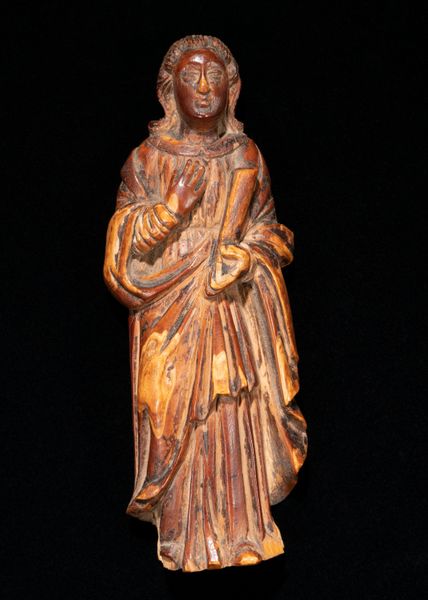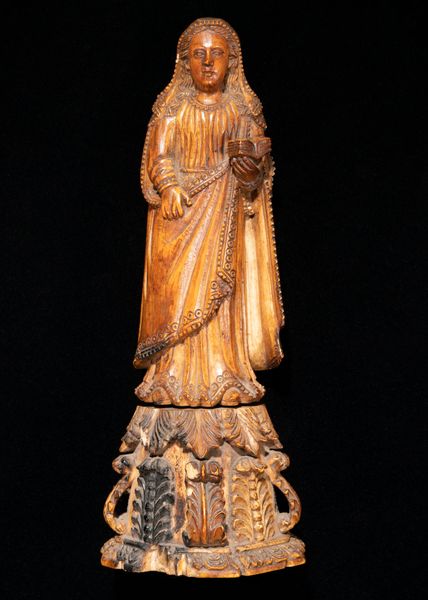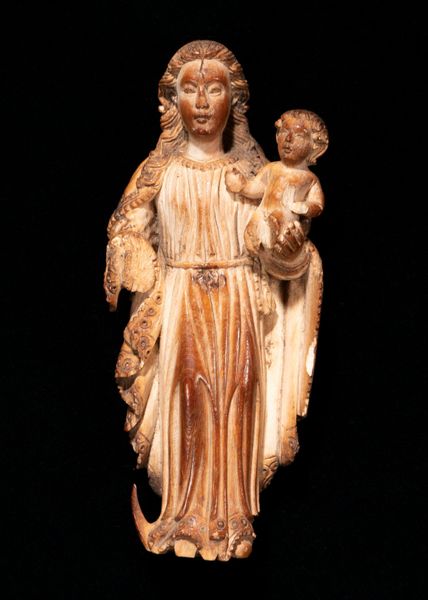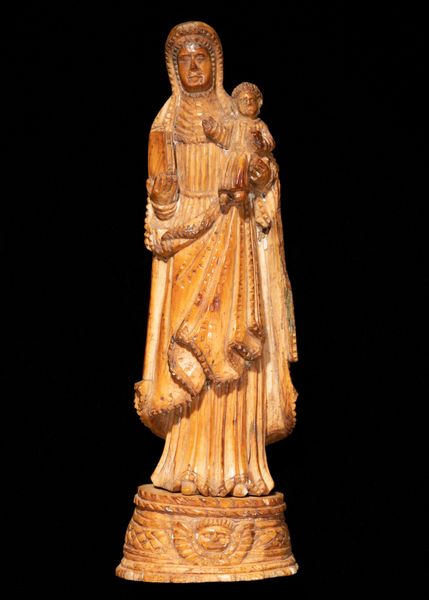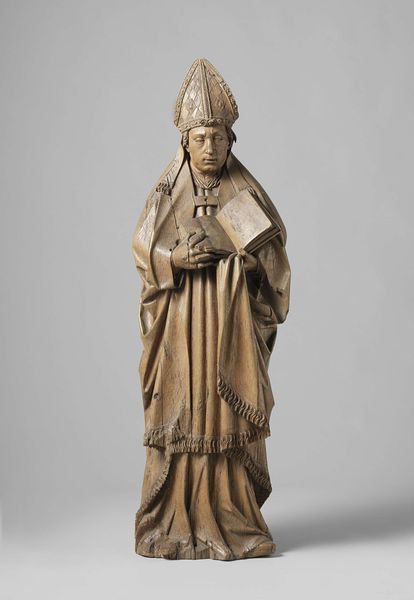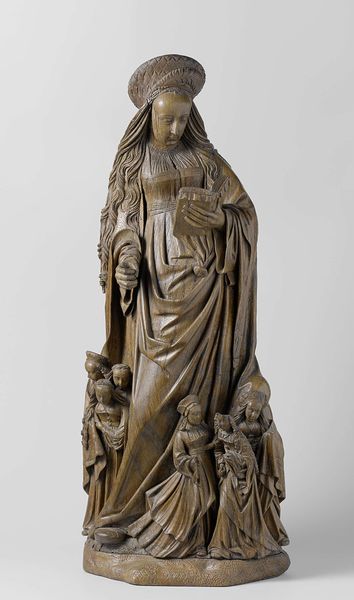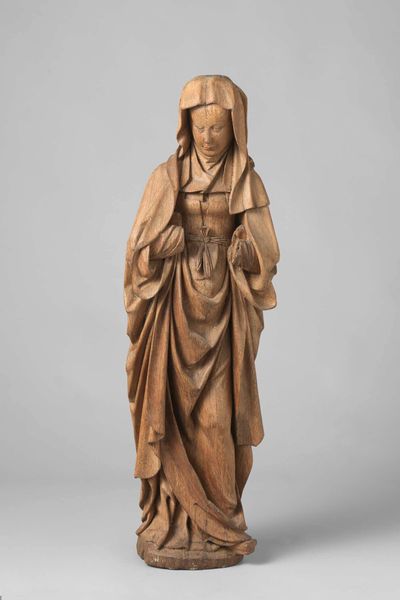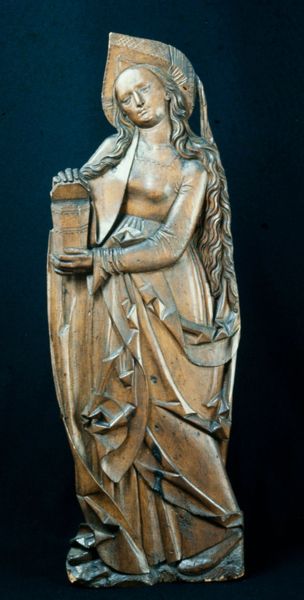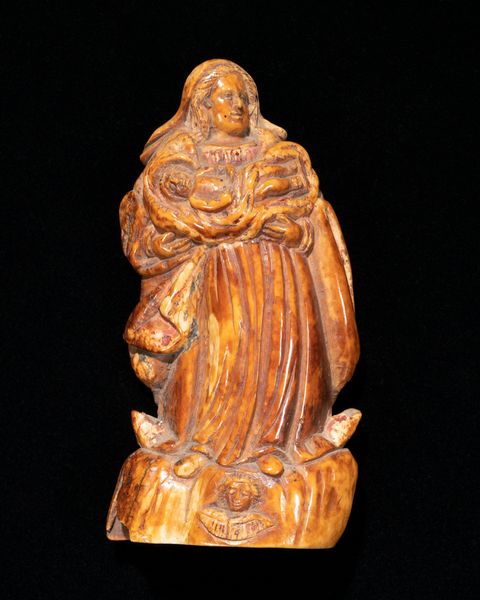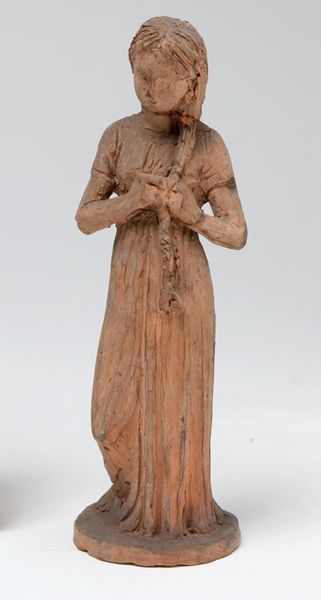
sculpture, ivory
#
portrait
#
baroque
#
stone
#
sculpture
#
figuration
#
sculpture
#
ivory
Dimensions: 4 1/4 × 1 9/16 × 1 5/8 in. (10.8 × 3.97 × 4.13 cm)
Copyright: Public Domain
This small sculpture of the Virgin Mary was carved from wood by an unknown artist. It is a beautifully realized object, demonstrating the skill and labor involved in carving. Notice the grain of the wood and the marks left by the carver's tools. Wood is a relatively soft material, but it still requires considerable skill to shape into such a refined form. The carver must have been deeply familiar with the material, knowing how to work with the grain to achieve the desired effect. During the medieval period, sculpture was a specialized craft, often practiced by members of guilds who underwent years of training to master their skills. Carvers relied on tools such as chisels, gouges, and knives to remove wood gradually, and create the desired form. Considering all the handwork involved, this object asks us to think about the economies of devotion that underpinned its production. It serves as a reminder that art and craft objects are not simply the products of individual genius, but also the result of collective knowledge, practice, and historical conditions.
Comments
minneapolisinstituteofart about 2 years ago
⋮
The province of Goa in western India was under Portuguese control from 1512–1961, forming a nexus in trading routes that circumnavigated the earth. Goan craftsman were renowned for their supple modeling of ivory (likely exported from Mozambique) into Christian icons, which feed the appetite for luxury products in Europe, as well as furthered evangelical missions throughout Asia and the Americas. Within the genre of Indo-Portuguese ivories, popular subjects include ‘Christ as the Good Shepard’ (the image of Christ as child would have related to similar bronze statuettes of the God Krishna) and the ‘Virgin of the Immaculate Conception,’ which shows Mary atop a crescent moon, both of which remain ever-present icons in South Asia’s diverse religious landscape.
Join the conversation
Join millions of artists and users on Artera today and experience the ultimate creative platform.
